Key Points: Several programs starting in the early- and mid-2000s, each encompassing multiple interventions, contributed to Peru’s dramatic decline in stunting prevalence. Our analysis illuminates Peru’s pathway to progress through four phases:
Building demand for health care
2002
Seguro Integral de Salud (SIS): provides health insurance for the poor.
2005
Juntos provides conditional cash transfer to incentivize preventive care for women and children.
Securing political support
2006
Civil society obtains a commitment from government to prioritize stunting.
Launching an evidence-based strategy
2007
Crecer establishes an evidence-based, streamlined poverty alleviation strategy.
Building the health system
2008
Programa Salud Materno y Neonatal (PSMN) improves the health system’s ability to care for pregnant women and newborns.
2008
Programa Articulado Nutricional (PAN) improves the health system’s ability to provide immunization and growth monitoring for children in their first 1,000 days and counseling on nutrition and hygiene for pregnant women.
2009
Improved targeting of Servicio Rural y Urbano Marginal en Salud (SERUMS) program increases the number of health professionals in rural areas.
Building demand for health care
Seguro Integral de Salud (SIS)
Comprehensive free health insurance program
TIMEFRAME: | 2002 to present |
COVERAGE: | ~two million beneficiaries under-five as of 2016 |
BUDGET AT LAUNCH | $65 million |
CURRENT BUDGET (2015) | $431 million |
In 2002, Peru launched the comprehensive health insurance program Seguro Integral de Salud (SIS). The program, which covered all poor children under the age of 18 and pregnant women, removed a formidable barrier to accessing health services, and provided a critical foundation for inculcating health-seeking behavior.
Initially, SIS provided free preventive services, basic and emergency care for mothers and children, including prenatal, delivery, and postnatal care to approximately 35 percent of the poor. In 2007, SIS expanded coverage, adding partially subsidized health insurance to informal workers who earned less than $1,000 per month. With this expansion, SIS covered more than 70 percent of the poor and 30 percent of the country’s population. Over time, the benefits provided under SIS also significantly expanded.
SIS, which is now Peru’s largest insurer and covered 43 percent of Peru’s population as of 2015, currently exists as a three-tiered system of fully subsidized health insurance for the poor, semi-contributory insurance for informal and small-business workers and contributory insurance. It covers more than 1,100 diagnoses which constitute about 65 percent of the expected disease burden, as calculated by the government.
Upon launch, SIS relied on a complex algorithm to calculate if a family was poor enough to be eligible for enrollment. In 2004, SIS implemented a new targeting system for determining eligibility. Neither proved perfect, with some non-poor families obtaining free insurance and some poor families denied the coverage they needed. Still, coverage rates in the five poorest states of Peru indicate that the program has largely hit its target; coverage rates ranged from 90 percent in Apurímac to 77 percent in Cajamarca in 2013. In 2016, SIS covered 75.5 million visits to health care providers.
Given its vast scale and success in expanding access to care, SIS is credited with expanding health seeking behavior and improving health generally in Peru.
For example, surveys of Peruvian mothers indicate that Peru’s children have become healthier over the last decade. Incidence of respiratory infection in the last two weeks among children under five fell from 46 percent to 36 percent and diarrheal episodes in the same population fell from 17 percent to 12 percent from 2000 to 2016, with the most notable drops from 2007/08 to 2016.
And when their children are sick, surveys of Peruvian mothers show, mothers are engaging in precisely the care seeking behavior SIS aims to establish. Use of oral rehydration to treat diarrhea among children under-five increased from 22 percent to 35 percent, and care-seeking for acute respiratory infection increased from 58 percent to 65 percent from 2000 to 2016.
Mothers are also seeking care for themselves. Institutional deliveries in rural areas doubled in the decade after the launch of SIS.
Our found that SIS had a large individual effect on stunting reduction for the period, 2000 to 2016 - among the largest of any variable analyzed.
This is manifested elsewhere, even when data is insufficient. In our decomposition analysis, we found that the most important explanatory factor of stunting reduction for children under-five from 2000 to 2016 was improvements to maternal and newborn health care.
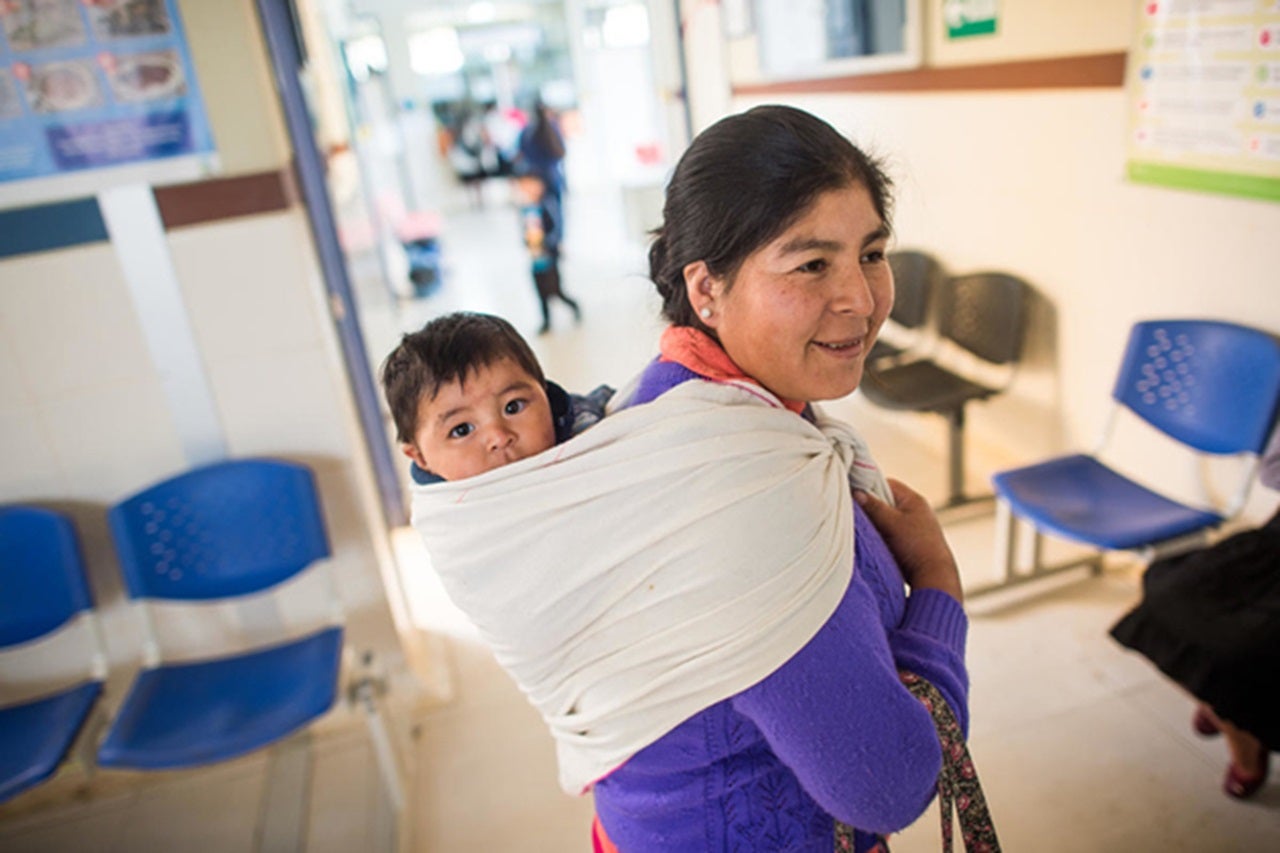
Juntos
Conditional cash transfer program
PROGRAM TIMEFRAME: | 2005 to present |
COVERAGE (2016): | 772,000 households (~25% of poor households nationwide) |
BUDGET AT LAUNCH: | $37 million. |
CURRENT BUDGET | $313 million. |
Launched as a pilot in 2005 in about 100 of the poorest districts (out of over 1,800 nationally), Juntos is a conditional cash transfer program developed to increase use of health services in rural areas and to reduce poverty. It was inspired by two earlier conditional cash transfer programs, Mexico’s Oportunidades and Brazil’s Bolsa Familia.,
Juntos, which still exists, provides households that meet various measures of poverty in designated districts with 200 Peruvian Soles (approximately $63) every two months (about ten percent of poor household’s average monthly expenses) if their school-aged children enroll in school, maintain an attendance record of at least 85 percent, if new mothers attend counseling sessions where they learn about the importance of exclusive breastfeeding, proper complementary feeding, and hygiene, if parents commit to obtaining identity cards for their children, and if young children and pregnant women in the household follow a rigid schedule of growth monitoring visits:
- Two growth monitoring visits in the first month for newborns
- Six visits in the first year of life
- Ten visits between the ages of one and four
- Thereafter, one growth monitoring visit annually
- Bi-monthly visits for pregnant women
- Children’s checkups include a range of preventive care including: measuring the child’s height and weight, deworming, Vitamin A supplements, and vaccinations. Women’s visits include folic acid supplementation, tetanus vaccinations.
Local Juntos managers are required to report on children’s school attendance and health care provided to each child and mother in their service area every two months. This information is entered into a national database which allows government officials to determine where children are receiving the required health care and where they are not. Because families enrolled in Juntos commit to obtaining national identity cards for themselves and their children, officials can track children, even if they move, to ensure they receive preventive care.
Juntos was expanded in 2007 and again in 2010, eventually covering 1,142 of over 1,800 districts, and 772,000 households.
The program doubled visits to health services for children under five.3 Growth monitoring for children under three years old more than doubled from 24 percent in 2008 to 58 percent in 2016. The improvement in growth monitoring of children in rural areas was even more pronounced, climbing from 21 percent to 66 percent over the same period. Children in Juntos households were 69 percentage points more likely to have received growth monitoring during the three months prior to being interviewed and were 55 percentage points more likely to have sought medical attention in the event of illness.
Our analysis showed that stunting declines were greatest for the poorest three quintiles from 2008 to 2016. This suggests that targeted interventions, such as Juntos, reached those most in need, and had the desired impact. It is noteworthy that the richest two quintiles have had negligible reduction in stunting from 2000 to 2016. Likewise, stunting reductions were most pronounced in poor rural states and not along the urban coast. This again suggests that targeted interventions, like Juntos, have been impactful.
The Victora curve, in which we see the greatest improvements in the height for z-score of children from six months old to two years old, indicates that post-birth interventions, like Juntos, are responsible for a significant portion of the reduction in stunting.
Victora Curves: Predicted HAZ score by child age

ICF, 2017. The DHS Program STATcompiler, (various) [data set]. Funded by USAID. Rockville, Maryland; 2017; INEI 2017. Encuesta Demografica y de Salud Familiar (ENDES), (various) [data set]. Government of Peru; 2017. Accessed 2017. Analysis done by SickKids
Our found Juntos was strongly and significantly associated with stunting decline at the regional level.
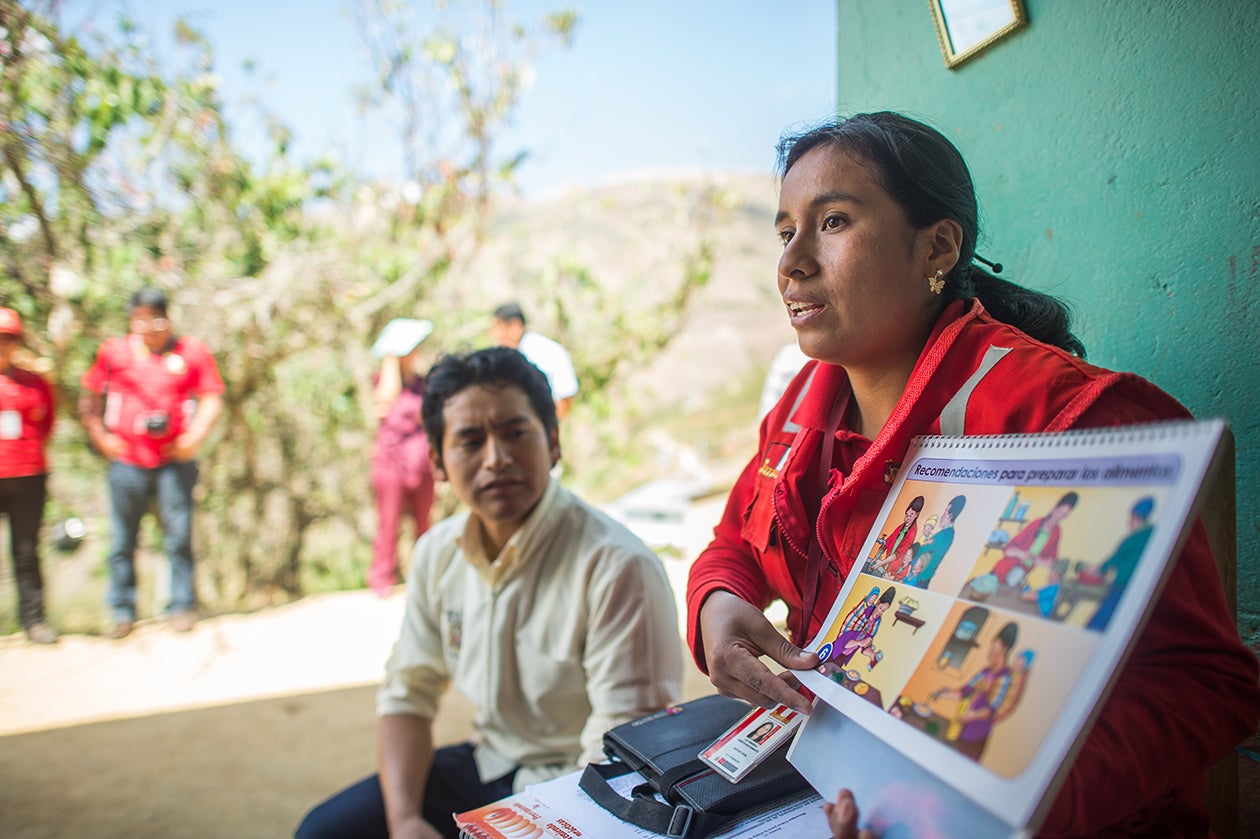
Securing political support
With the end of the Shining Path guerilla war in the mid-1990s and the removal of President Alberto Fujimori from power in 2000, Peru’s democratic institutions and civil society began to strengthen. The country’s GDP growth rate reached more than six percent; Peru was approaching middle income status but lagged behind its neighbors on many measures of health and welfare. Civil society organizations recognized that they were in a critical window of opportunity. When the country reached upper middle income status, many large international organizations and bilateral donors would leave. The government needed to harness Peru’s increasing economic growth for the greater good and partner with donors before they pulled out. Civil society leaders coalesced around two urgent issues: inequality and chronic childhood malnutrition, as a tangible expression of this inequality.
Two civil society organizations played a leading role in placing these issues at the center of national discourse: Iniciativa contra La Desnutrición Infantil (the Initiative against Chronic Infant Malnutrition, IDI) and Mesa de Concertación para la Lucha Contra la Pobreza (National Roundtable for the Fight Against Poverty, MCLCP).
The Initiative against Chronic Infant Malnutrition (IDI) first convened in 2005 by the Director of CARE in Peru, had three goals: convince the public that chronic malnutrition was a national emergency; persuade the government to prioritize the issue; pivot away from Peru’s expensive, uncoordinated, and ineffective food supplementation programs. Civil society organizations wishing to join IDI had to and agree to join the organization’s consistent and simple messaging to ensure they spoke with one voice.
Initiative against Chronic Infant Malnutrition:
Civil society platform that helped put the stunting crisis on the political agenda and then supported the government's nutrition policymaking
TIMEFRAME: | 2005 to present |
MEMBERSHIP: | 17 organizations, including local NGOs, donors, and multilaterals. |
IDI distilled the learnings of successful malnutrition pilot programs in rural Peru led by CARE, UNICEF Caritas, ADRA, and PRISMA, and delivered these succinctly to government officials. To officials who had supported Peru’s $250 million annual spending on food supplementation programs for decades, IDI explained the need for a more holistic approach to childhood nutrition, one that involved teaching parents best practices in nutrition and hygiene, and reaching the poorest communities with vaccinations, poverty alleviation programming, and preventive health care.
The IDI’s campaign reached a turning point in 2006 when the organization issued a high-profile challenge to all candidates in Peru’s upcoming Presidential election to sign a pledge to fight chronic malnutrition if elected. The so-called 5x5x5 campaign, in which candidates agreed to reduce stunting by five percentage points in children under five in five years, placed childhood stunting on the platform of every political party in the country.
“…there was a profound reflection by people with decision-making power, by the media. It was an important moment. It was a period when the need of having clear objectives, of building a country and making real changes for the people and particularly for the most vulnerable segments was discussed and defined. The need of privileging children and of building sustained policies across governments was clearly defined.”
- Former Technical Officer at UNICEF.
Our indicates that the IDI was instrumental in achieving the commitment of political candidates in the fight against chronic malnutrition.
Even after all political candidates signed the pledge, the IDI continued its work, drafting a concise 10-point policy document for the first 100 days of newly elected President Garcia. Upon taking office, Garcia, recognizing the high stakes, pledged to achieve a nine percent reduction in stunting over the next five years and followed many of IDI’s recommendations. President Garcia started by tasking the Prime Minister’s Interministerial Committee - a body with the power to compel corporation among competing ministries - to design anational strategy for poverty reduction focused on stunting, know as Crecer.
Because the IDI includes director-level and senior managers from Action Against Hunger, ADRA Peru, CARE Peru, CARITAS Peru, UNICEF, UN Population Fund, Future Generations, Institute of Nutrition Research, Mesa de Concertación para la Lucha Contra la Pobreza (National Roundtable for the Fight Against Poverty, MCLCP), FAO, PAHO, Plan International, PRISMA, WFP, and USAID, it has been able to meet with every incoming president to brief them on the issue and ensure that effective policies and programs continue to receive the necessary funding and political support. The organization recently turned its attention to Peru’s high anemia levels, which currently affect close to 20 percent of women ages 15-49 in the country.
Mesa de Concertación para la Lucha Contra la Pobreza (National Roundtable for the Fight Against Poverty, MCLCP):
Advocacy organization facilitating collaboration between civil society and government across ministries, geographies, and levels of government
TIMEFRAME: | 2001 to present |
MEMBERSHIP: | everal civil society organizations, multilaterals (including FAO, UNICEF, WFP, UNDP). |
The Mesa de Concertación para la Lucha Contra la Pobreza, founded in 2001, includes the FAO, PAHO, WFP, UNICEF, and UNFPA, and facilitates citizen participation in the formulation and implementation of poverty reduction policies. The MCLCP serves as a coordinating space between government and civil society to help demand and achieve greater efficiency of and transparency within poverty reduction programs. It had a presence in each of the 26 states of the country and helps monitor and advocate for continued progress on stunting.
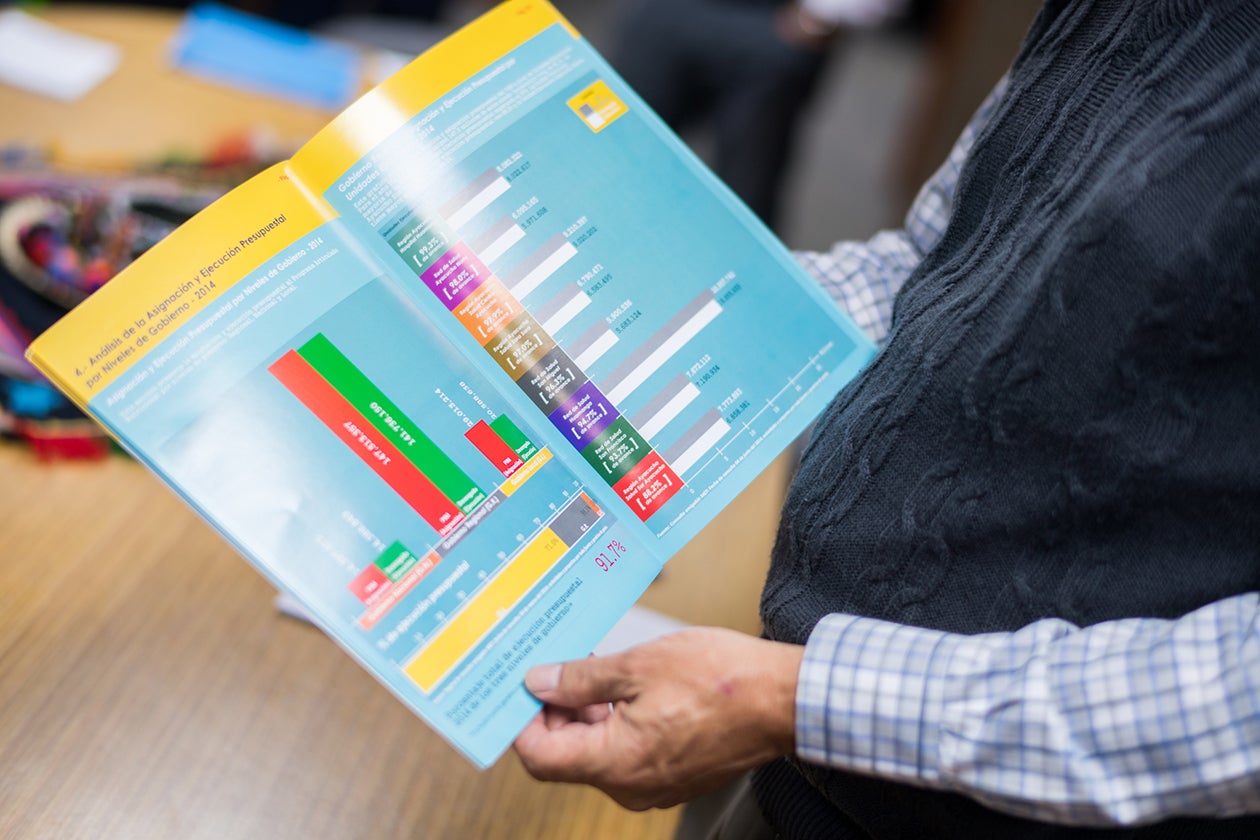
Launching an evidence-based strategy
Crecer
National nutrition-focused anti-poverty strategy
TIMEFRAME: | 2007-2011 (replaced by a successor program, Incluir para Crecer, in 2011) |
COVERAGE: | Identified 880 priority districts. |
In 2007, Peru launched a rigorous review and rationalization of its existing poverty alleviation and nutrition programs. Crecer (To Grow) amounted to a large-scale prioritization exercise. It increased impact without increasing funding by shifting resources away from ineffective programs towards evidence-based programs and prioritizing the 880 districts where poverty was concentrated. Gradually, programs supported by neither evidence nor experience, such as Peru’s uncoordinated food supplementation programs, were either terminated or deprioritized.
From more than 80 programs, officials selected about two dozen evidence-based programs that were further streamlined for cost-effectiveness and efficiency. These were then incorporated into a new data-driven national poverty alleviation strategy, Crecer, managed by the Prime Minister’s office. These evidenced-programs were concentrated in the key geographies were they could make the most difference. The new strategy focused on only a few key goals:
- Reduce the prevalence of chronic infant malnutrition in children under three
- Reduce the incidence of low birth weight
- Reduce morbidity
- Improve quality of diet and improve micronutrient intake among children under three
- Improve access to water, and improve sanitation and hygiene
- Improve access to health services for pregnant women and children under three
- Empowerment of women in poor, remote, and rural communities
Crecer not only streamlined the range of poverty alleviation programs, and the demographic groups served by those programs, but also streamlined the programs themselves to focus on core activities. For example, under Crecer, counseling for new mothers focused on only three key messages: exclusive breastfeeding for infants under six months old, proper complementary feeding thereafter, and the importance of handwashing.
Crecer was piloted in 200 of the poorest districts in Peru and quickly scaled, at first, to 880 districts, reaching one million children in the first 1,000 days of their life. These districts, which covered nearly half the country, had poverty rates of more than 50 percent, illiteracy rates of more than 30 percent and stunting rates of more than 30 percent. Later, Crecer was scaled to cover more than 900 districts in 14 of Peru’s 24 states. In 2011, Crecer was adapted into Incluir para Crecer, a new strategy to improve health and nutrition, while reducing poverty and providing other social services.
In Crecer districts, Peru’s key poverty alleviation and stunting reduction programs were implemented as fully as possible. For example, SIS dropped its means test and provided automatic free health coverage for residents in Crecer districts.
“16 programs were created as a part of Crecer in different states, especially in the ones with more prevalence of chronic child malnutrition. Each regional government gave a name to its local program, which was good as it is a characteristic of regionalism, and at the same time, this positive regionalism was aligned to the national policies.”
- Deidentified informant.
Some studies attribute the greatest reductions in stunting to districts prioritized by Crecer. Other researchers maintain that Crecer’s social welfare programs were ineffective and did not contribute to the reduction of stunting in Peru.
Findings from our research support Crecer’s key role in the consolidation of nutrition specific and sensitive initiatives and funds in the country. We posit that this streamlining was important for Peru’s child stunting reductions post-2010. Literature review supports this assessment, that Crecer resulted in a shift in government thinking towards a more data-driven approach to reduce stunting. As such, Crecer was likely effective at streamlining government resources to important target areas, including nutrition and preventive health care.
ADDITIONAL READING:
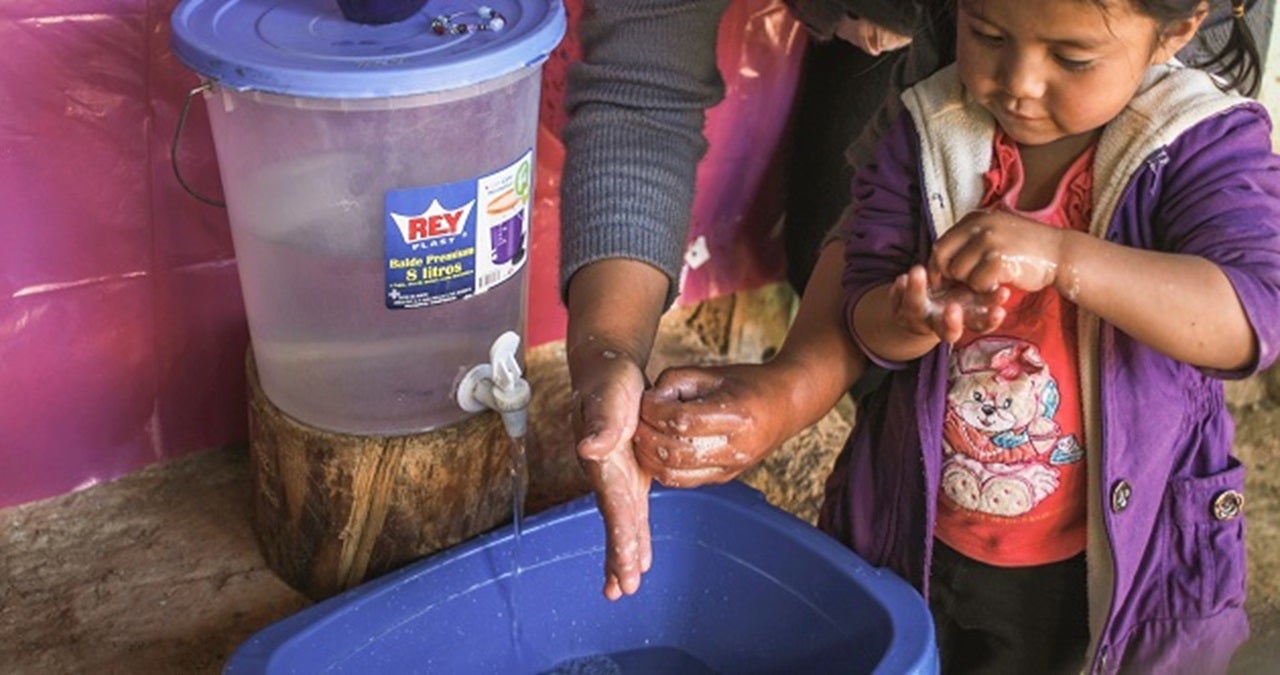
Building the health system
While Peru’s Salud Básica para Todos program in 1994 increased the number of health posts, clinics, and centers across the country by 50 percent, and increased by 10,000 the number of paramedical personnel throughout the country, many rural health facilities still suffered from a chronic lack of staffing and resources, until the following programs were implemented.
Programa Articulado Nutricional (PAN):
Results-based financing program designed to reduce chronic childhood malnutrition through selected interventions.
PROGRAM TIMEFRAME: | 2007 to present |
BUDGET AT LAUNCH (2009): | $323 million. |
CURRENT BUDGET (2014): | $415 million. |
Peru’s results-based financing initiative, Programa Articulado Nutricional (PAN) focuses on strengthening the health system’s ability to provide preventive and nutrition services to children in their first 1,000 days and pregnant women.
PAN includes 24 different interventions. But given budget constraints and a desire to be focused and strategic, it prioritizes the delivery of three key services which aim to reduce the incidence of low birth weight, improve early childhood nutrition, and reduce early childhood infection. The prioritized services are: to benefit infants: vaccinations, even more frequent child growth monitoring child growth monitoring and an emphasis on repeated counseling for new mothers in three key practices: exclusive breastfeeding, complementary feeding, and handwashing.
While PAN does not directly provide these services, it focuses on resolving last-mile supply challenges. As a results-based financing program, PAN ensures that funding for the treatments and counseling that are part of Control de crecimiento y desarollo (CRED), chiefly growth monitoring, is based not on previous benchmarks but instead based on a realistic understanding scale, goals, and local conditions.
PAN’s funding formula is designed to equip poor states with the resources necessary to address the scale of problem they face because it is based on real-time data on the number of children in a given district.
ADDITIONAL READING:
Stunting rates vs. budget allocation to PAN, by regions

Peru Ministry of Finance
Under PAN’s funding formula, Peru’s budget for vaccines tripled between 2009 and 2012. And funding allocations for vaccines and deployment of staff to poor states increased significantly. This funding increase allowed the region - which had a stunting rate of more than 50 percent at the time of PAN’s launch - to procure enough vaccines for all the children under its care and hire staff to conduct growth monitoring and administer vaccines.
“Before 2008, there was not a budget line devoted to stunting reduction. You didn’t know how much was needed, how much you were spending, who was spending, what you were purchasing. This changed after 2008.”
- a Ministry of Economy and Finance staff member.
The results-based financing initiative also protects earmarked funding to ensure that funds for immunizations, for example, are not used to pay for office expenses.
The program also provides technical support in the form of a team of managers to help advise states and municipalities on logistics and budgeting and another team of about 100 social workers and nurses who travel the country training health workers on best practices for the three key interventions delivered through CRED.
PAN was supported by an EU-funded USE 72 million (60 million euro) incentive program , called EUROPAN, which provided incentives to the 54 poorest districts in Apurímac, Ayacucho, and Huancavelica municipalities and districts when they met their targets. Over the course of the three-year program, incentives included an honor called the Sello Municipal, the “municipal seal” awarded by the President, typically accompanied by press coverage and additional funding, when districts met their immunization or children’s growth and development monitoring targets.
In its first year alone, PAN’s impact was apparent. The number of children who completed their scheduled immunization more than doubled and the number of children receiving growth monitoring increased by a factor of four. By 2016, a majority of children had completed their immunization and their growth monitoring. And the percentage of children under 12 months old immunized against rotavirus and pneumococcus more than tripled from 25 percent in 2009 to 79 percent in 2016.
PAN was also instrumental in increasing the number of health workers, particularly in rural areas. In 2000, Peru’s human resources for health (HRH) levels (the number doctors, midwives, nurses) were the worst in Latin America, leaving residents in huge swaths of the country without the expert care they needed. From 2004 to 2016 the density of health workers increased from 11.78 to 28.24 per 10,000 people. In Loreto, one poor region, the number of health workers more than quadrupled from less four to nearly 18 per 10,000 residents. PAN was largely responsible for helping Peru meet and exceed the World Health Organization recommended threshold of 23 doctors, nurses, and/or midwives per 10,000 population.
As a results-based financing program, PAN made a significant impact upstream, serving as a financial-incentive platform to help strengthen community-based platforms which delivered critical care. Peru’s stunting decline appears to be tied to the delivery of these programs/interventions at the community-level and/or through financial incentives.
Our respondents note that the implementation of PAN, and all its components including the delivery of pneumococcal and rotavirus vaccines, was a critical strategy that may have had significant impact on stunting reduction. In our , time-adjusted coefficients showed that per capita expenditure on the services PAN supported including pneumococcal vaccine, rotavirus vaccine, improved water access, vitamin A supplementation, significantly influenced stunting reduction. After adjusting for time and covariables, PAN expenditure and the pneumococcal vaccine are both factors that significantly influenced stunting prevalence. In fact, PAN expenditure had a large individual effect on the annual stunting reduction over the study period.
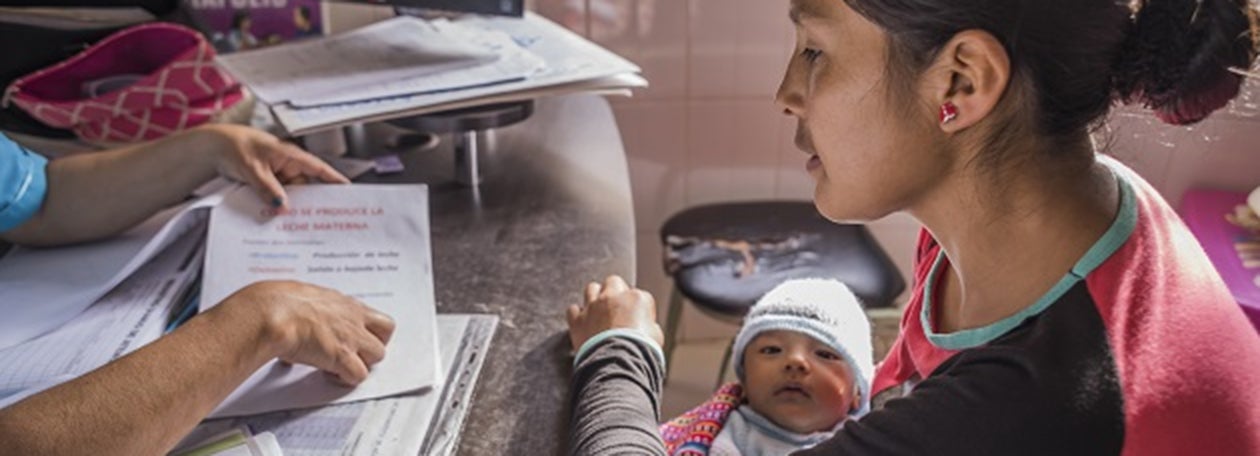
Programa Presupuestal Salud Materno Neonatal (PSMN):
A results-based financing program that improved the quality and availability of preventive healthcare for pregnant women, mothers, and newborns.
TIMEFRAME: | 2007 to present |
BUDGET AT LAUNCH: | $170 million. |
CURRENT BUDGET: | $474 million. |
Peru’s Salud Materno Neonatal (PSMN) was designed to reduce maternal and neonatal mortality by strengthening the health system’s ability to provide a basket of critical services for women and newborns and cultivating health seeking behavior in rural women. PSMN increased the number of women receiving:
- Four antenatal checkups
- Counseling on diet and hygiene
- Folic acid supplements
- Fetal growth monitoring
- Screening for high risk complications and diseases
- Family planning information
- Encouragement to deliver with a skilled birth attendant at a health facility
While PSMN, a results-based financing program, did not provide these services directly, it served to ensure that clinics were staffed and equipped to provide these services, improving the availability and quality of these services. The proportion of Peru’s pregnant women who received the government recommended four or more antenatal visits increased from 69 percent to 96 percent, from 2000 to 2016.
A recent study found that more than half of Peru’s women now report nine or more antenatal visits. Care of pregnant women has improved even in Peru’s poorest states. In 2000, less than half of pregnant women in the poor and rural states of Huánuco and Cajamarca received the recommended four antenatal visits. By 2016, 96 percent of pregnant women in these districts received the four antenatal visits recommended by the government.
Research demonstrates that women in Peru who attend regular growth monitoring are significantly more likely to receive critical prenatal treatment, including blood tests and urine tests, and important information about keeping themselves and their family healthy.
From 2000 to 2016, the percent of women using a skilled birth attendant increased from 63 percent to 98 percent. Skilled birth attendants served as a critical link in Peru’s model, encouraging mothers to seek further health care and education about best practices for nutrition and hygiene.
In our , after adjusting for time and covariables, factors that significantly influenced stunting included having a skilled attendant at birth. PSMN supported programs that encouraged women to use this service and improved the availability and quality of skilled birth attendants.
As a results-based financing program, PSMN had an impact upstream, serving as a financial-incentive platform to help strengthen community-based platforms delivering critical care. Peru’s stunting decline appears to be tied to the delivery of these programs/interventions at the community-level and/or through financial incentives.
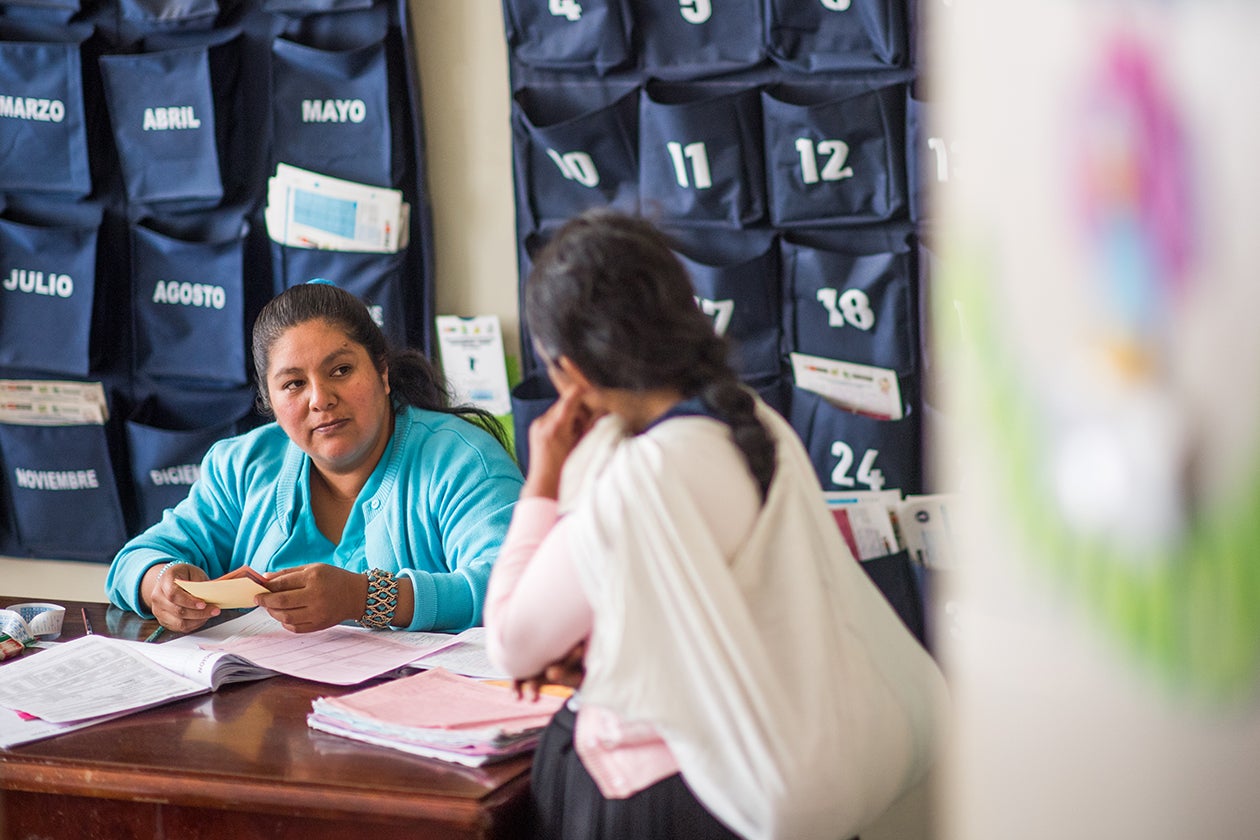
Servicio Rural Urbano Marginal en Salud (SERUMS):
A program to distribute and retain health workers in poor and remote areas.
TIMEFRAME: | 1985 to present |
COVERAGE: | From 2007 to 2013, SERUMS placed more than 40,000 health care professionals in poor and rural communities. |
Initially launched in 1985, Servicio Rural y Urbano Marginal en Salud (SERUMS) requires all health professionals who want to work in the public health system or who receive government financial aid while in school to serve for at least one year in a poor community. The program channeled small numbers of doctors, nurses and midwives to the poorest states until 2009, when the program began using updated and precise poverty maps prepared by the Social Compensation and Development Fund (FONCODES) to determine which districts were poor enough to qualify for a SERUMS health staff. Under the new system, many more districts qualified as poor and many more doctors, nurses, and midwives were sent to serve, from 4,650 in 2007 to 6,384 in 2013.
In 2008, out of the 800 poorest districts in the country, just 53 percent had a doctor allocated under the SERUMS program. By 2011, under the new distribution system, this figure rose to 89 percent. The program both increased the number of health staff working in poor areas and increased the number of poor areas served by qualified medical professionals. In the three poorest states of Peru (Ayacucho, Apurímac, and Huancavelica), 95 percent of districts now have a medical doctor.
